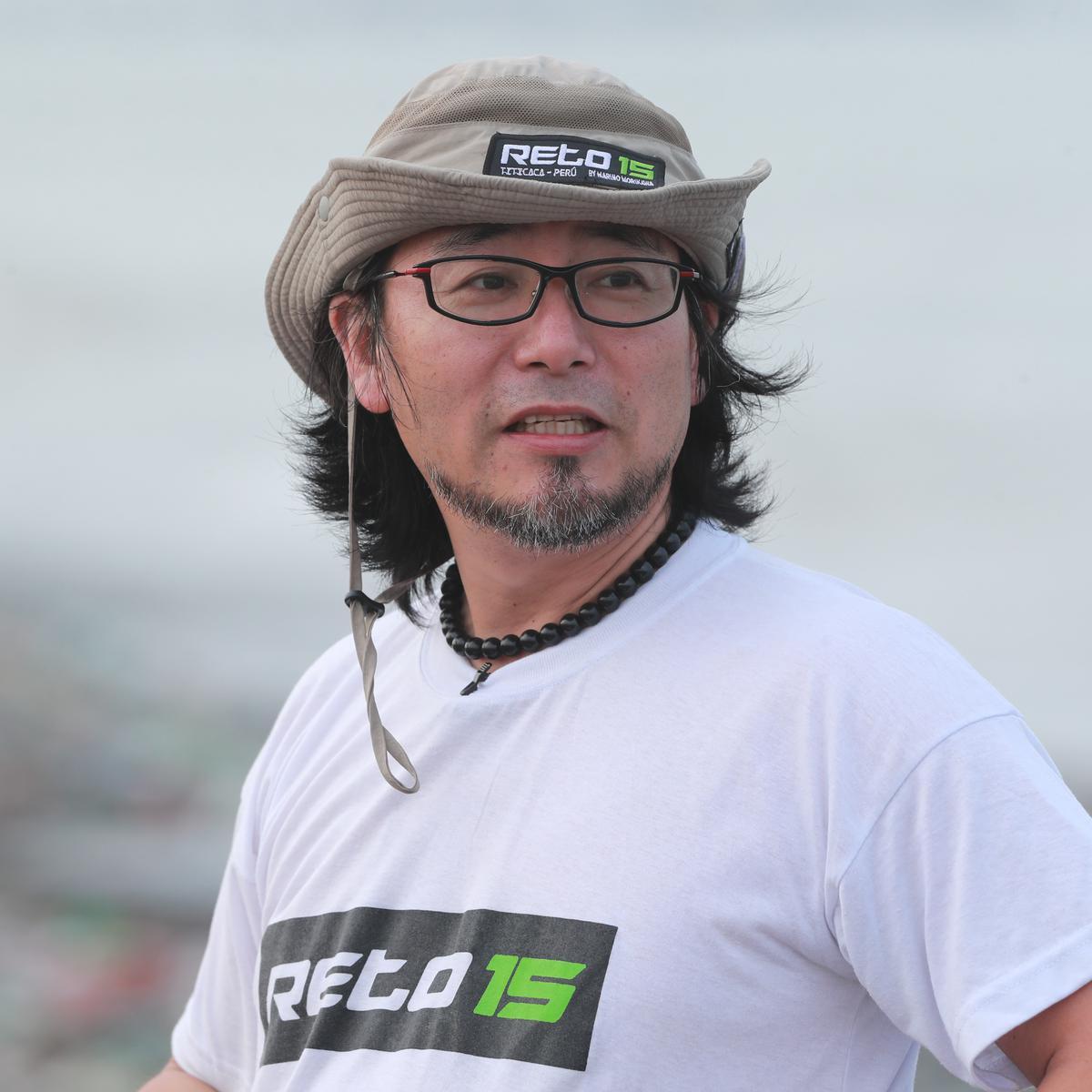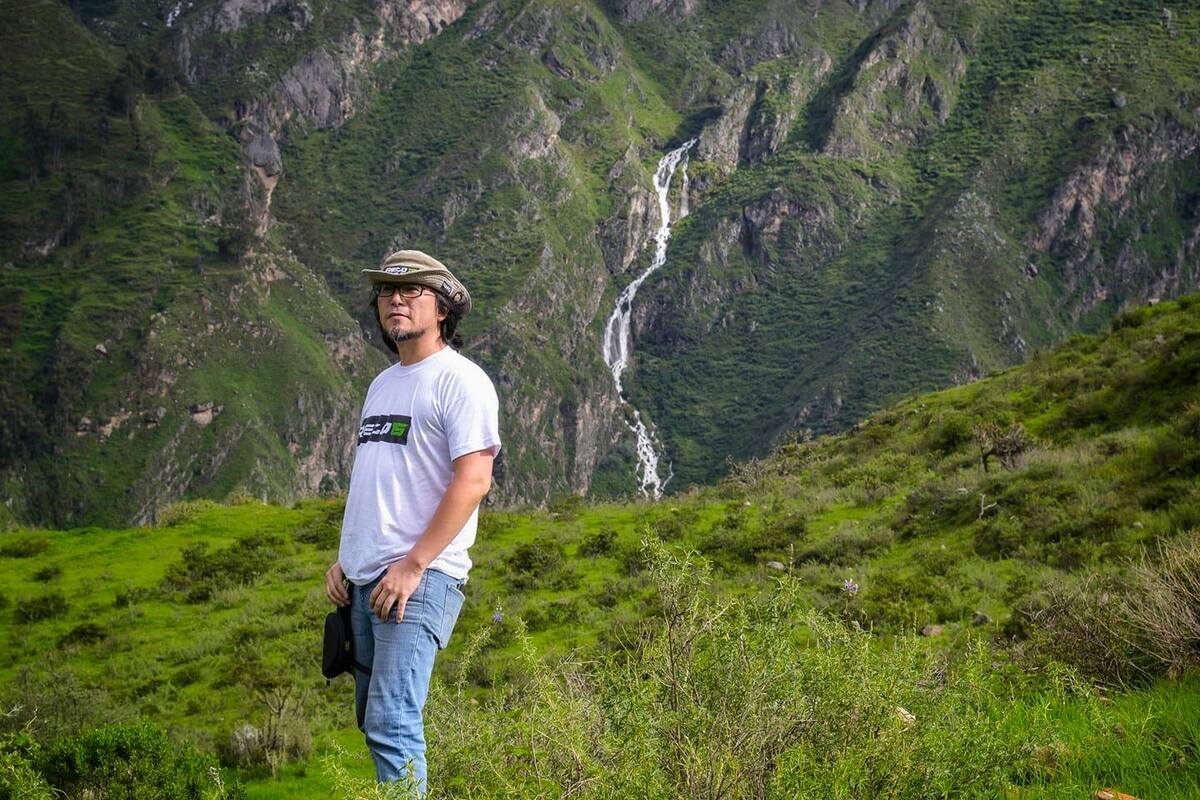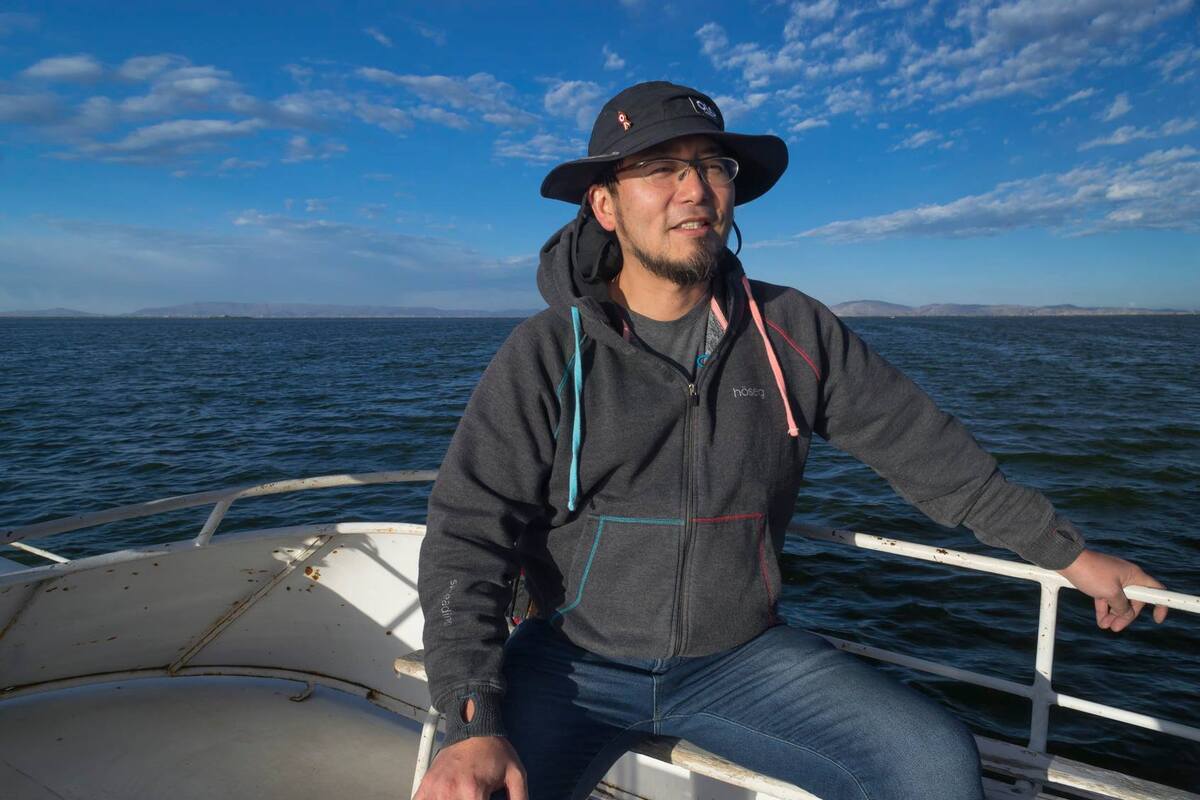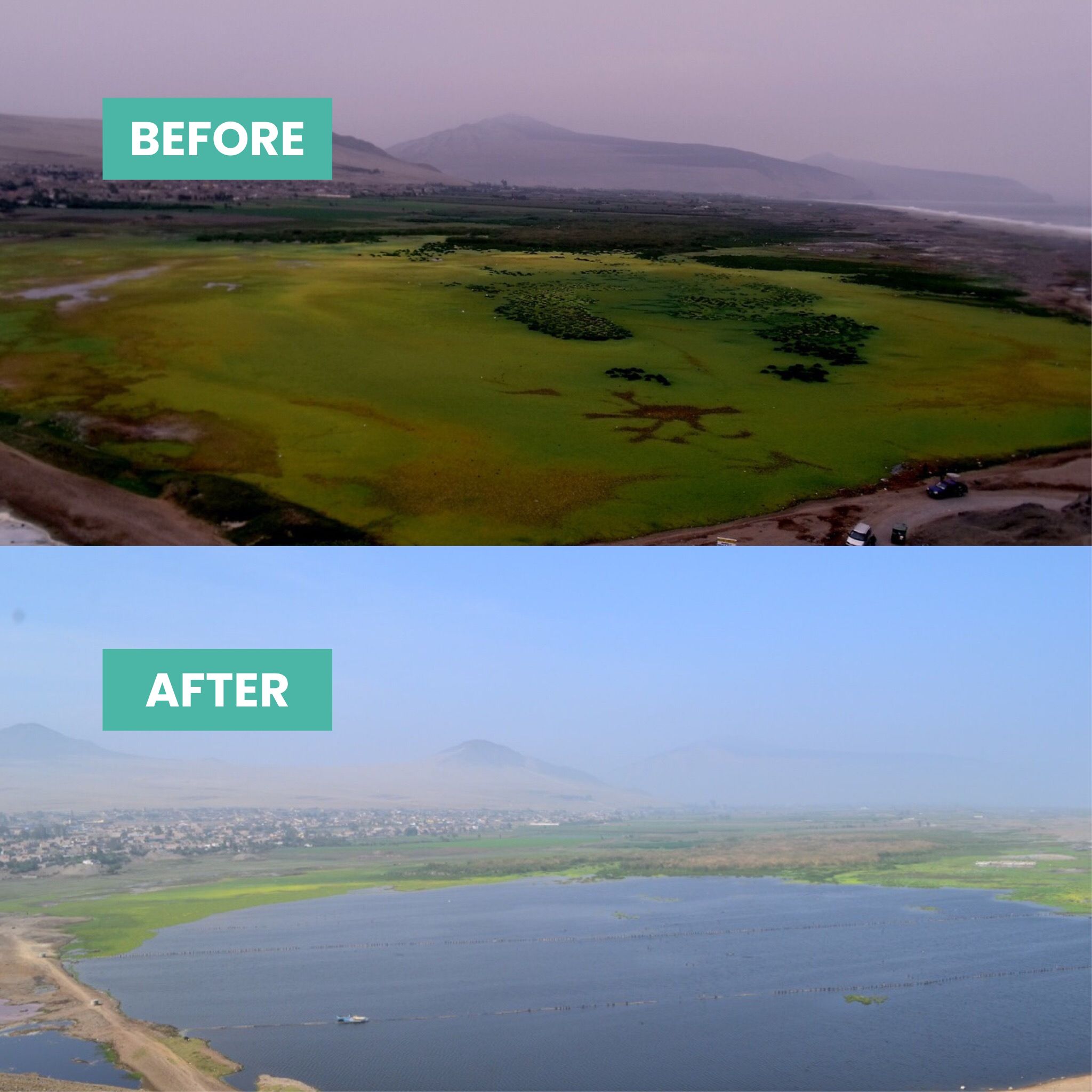Climate Hero: Marino Morikawa
- Nature Conservation
- Ecosystem Restoration
- Wetlands
- Water Stewardship
- Science & Technology
- Climate Heroes
- Andes Mountains & Pacific Coast
- Southern America Realm
A once pristine oasis in the Peruvian coastal desert, El Cascajo Lake was teeming with plant, animal, and marine life. But when pollution contaminated the wetlands so intensely that officials had given up on its restoration, local scientist Marino Morikawa returned home, cleaned the water, and saved the ecosystem.

Image credit: Facebook-T T T GRUPO MORIKAWA
An ecosystem and childhood playground in peril
In 2010, Morikawa was studying for his doctorate in environmental science at Japan’s Tsukuba University when he received startling news from his father. The Cascajo wetlands were so polluted that they were about to be “capped,” or so hazardous to human and environmental health that a covering, such as soil, was to be placed on top to prevent the spread of contaminants.
Growing up, he had spent much of his childhood swimming, boating, and fishing in the lake with his father. Often impatient waiting for a catch on his line, a young Morikawa would roam the wetlands, exploring the wildlife and creating imaginary adventures of his own.
The word of El Cascajo’s infested state shook him. He flew home to see it with his own eyes and perhaps see if he could do something to save it.
Human-made disaster
It had been twenty years since his last visit, and when Morikawa looked out at the lake, the once blue waters were covered in a green coat, and it smelled terrible. Bateria blooms gave off a powerful stench, and the invasive aquatic plant species, pustia stratiotes, also known as water lettuce, was the culprit of the new hue.
No longer were flocks of hundreds of migratory birds in the air or fish swimming in the water. The contamination was so dire the entire lake had shrunk from 150 hectares to 40 hectares.
Entirely human-made, this extreme pollution was caused by a trifecta of an illegal landfill nearby, sewage from livestock farms, and a shoddy waste drainage canal. Local officials had long given up on restoration efforts. That’s when Morikawa stepped in.

Image credit: Facebook-T T T GRUPO MORIKAWA
Taking restoration into his own hands
Meeting with the mayor of Huaral, Morikawa asked for one year of complete control of restoring El Cascajo. Despite warnings that many before him had attempted to clean the lake, the mayor agreed.
Morikawa tried to raise money, first in Peru and then in Japan, but no one would give much to his project. So, he took out all his savings, borrowed money from three banks, and set out to camp in the wetlands.
Designing a solution
Studying the water, soil, and winds, Morikawa identified the sources of the pollutants. He then returned to the labs at Tsukuba to analyze his findings and devise a solution.
Previously studying nanotechnology and chemistry, he decided to deploy two nanotechnology methods in the lake’s waters: a micro-nano bubbling system and a biofilter.

Inventing microbubbles to trap contaminants
The micro-nano bubbling system comprises bubbles 10,000 times smaller than soda beverage bubbles. At first, they sink to the bottom of the lake and slowly begin to rise. The bubbles work as a magnet with positive and negative ions, attracting and trapping viruses, bacteria, and polluted microorganisms.
Unable to move, the contaminants die out. If any remain alive when the bubbles reach the surface after five to eight hours, they vaporize due to the sun’s radiation and ultraviolet rays.
Creating biofilters to sift through bacteria species
The second method Morikawa used was a biofilter. A biofilter contains living material that creates a biofilm to capture and degrade pollutants. It filters out harmful bacteria and preserves the good species that contribute to microflora.
Morikawa created his own clay and ceramic biofilters by taking a local pottery class in Peru.

El Cascajo Lake, before and after.
Nature bounces back quickly
It took six months for Morikawa to research, develop, and deploy his nanotechnology system. But in just four months, he had decontaminated the entire wetlands.
Today, more than 90 species of migratory birds have returned to El Cascajo, and ten fish species have come back to swim in its waters. Morikawa’s work proves that nature returns when given a chance to recover.
”Nature does its job. All I do is give it a boost to speed up the process.”
Cleaning waterways and inspiring people
Morikawa also inspired and empowered local people. Seeing him work long hours all alone in the wetlands of El Cascajo, one morning, he arrived at the lake with more than a hundred people of all ages waiting to help him.
“If you take the first step, others will follow.”
Since the restoration of El Cascajo in 2014, Morikawa has founded his own company, Nanoplus 7, which is dedicated to decontaminating bodies of water. He and his team have worked on over 30 habitats around the world.
Currently, their efforts are focused on the Chira River in Ecuador and Titicaca, Huacachina, and Alalay lakes in Peru. Morikawa’s efforts are a testament that one person can make a difference and have a ripple effect that extends to the entire planet’s shared ecosystem.
.jpg?auto=compress%2Cformat&w=1440)


